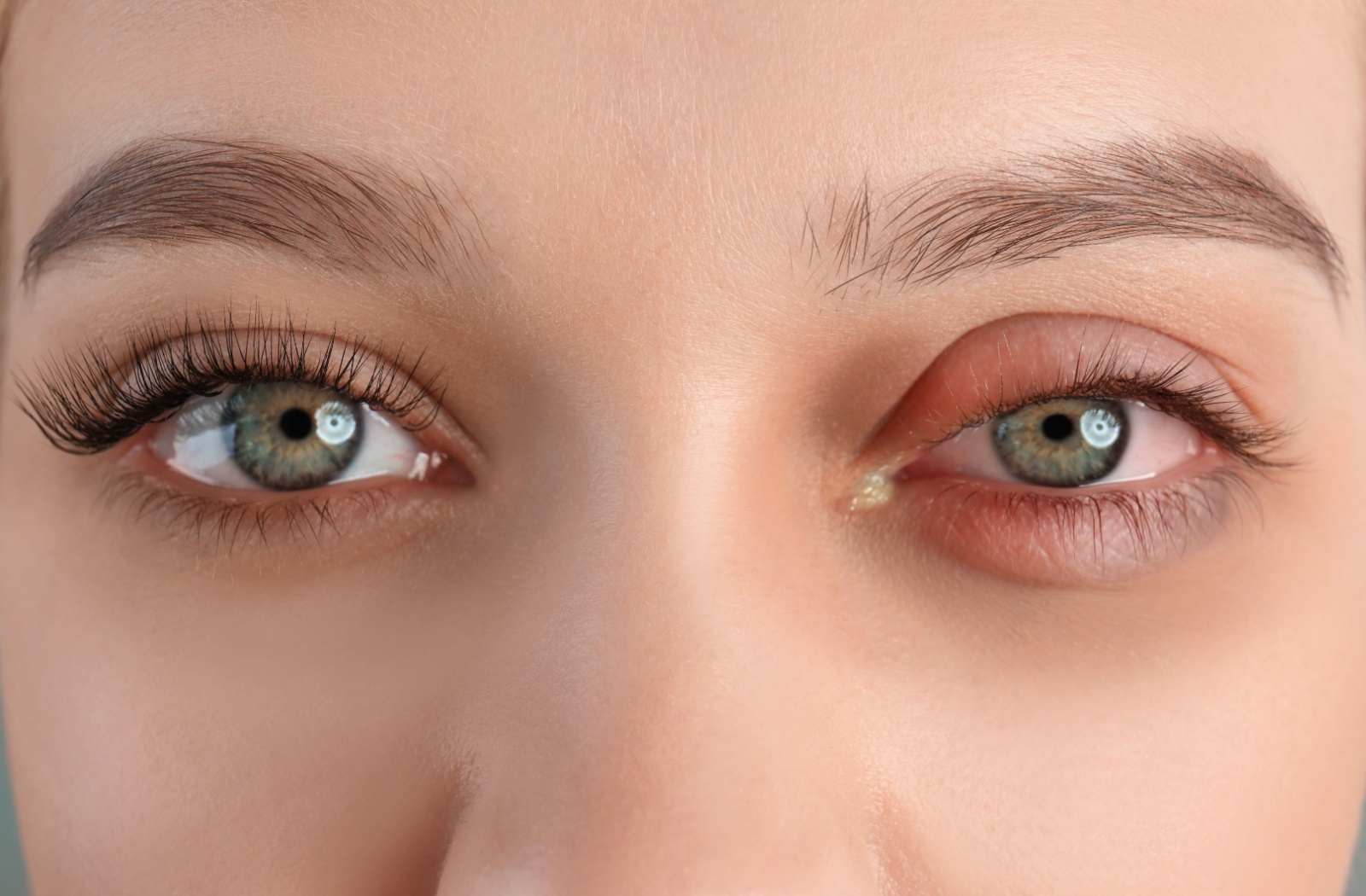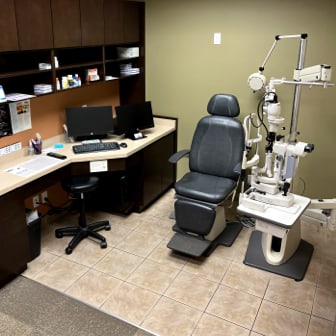Red or pink eyes can feel uncomfortable, itchy, and look alarming—but they aren’t always caused by pink eye. In fact, eye issues like eye allergies, blepharitis, dry eyes, subconjunctival haemorrhage, styes, and uveitis can all be commonly misdiagnosed as conjunctivitis. While their symptoms may overlap, each condition requires a different approach to treatment. Knowing the difference is key to protecting your vision and getting relief.
What Is Pink Eye?
Pink eye, or conjunctivitis, occurs when the conjunctiva—the thin, transparent tissue covering the white of your eye and lining your eyelids—becomes inflamed. This inflammation causes the blood vessels in the eye to become more visible, giving the eye its signature pink or red appearance.
Pink eye can be caused by:
- Viruses (such as those responsible for the common cold)
- Bacteria, which may lead to thick, yellow-green discharge
- Allergies, including seasonal triggers like pollen or pet dander
- Irritants, such as chlorine, smoke, or dust
It often starts in one eye but can easily spread to the other, particularly in viral or bacterial cases. Symptoms may include redness, watery eyes, itchiness, crusting around the eyelids (especially after sleep), sensitivity to light, and blurry vision. While some forms are mild, untreated conjunctivitis—especially bacterial or viral—can lead to complications like corneal inflammation or scarring. An accurate diagnosis is the first step in choosing the right treatment and preventing potential issues.
6 Common Eye Issues That Can Be Mistaken for Pink Eye
1. Allergies
Allergic conjunctivitis is actually a form of pink eye, but it’s very different from bacterial or viral infections. It’s not contagious and is often triggered by pollen, pet dander, dust, or other allergens. If both eyes are affected, and symptoms come with sneezing or a runny nose, allergies could be the real culprit.
Treatment usually includes avoiding the allergen, using antihistamines, and applying artificial tears or cold compresses. Unlike infectious pink eye, allergic conjunctivitis won’t go away with antibiotics.
2. Blepharitis
Blepharitis is a chronic inflammation of the eyelids, especially near the base of the eyelashes. It often causes redness, irritation, burning, and crusty debris—symptoms that overlap with pink eye. However, blepharitis is focused on the eyelids rather than the white of the eye.
This condition responds well to a consistent eyelid hygiene routine, such as warm compresses and gentle cleansing with recommended eyelid scrubs or wipes.
3. Dry Eye Syndrome
Red, irritated eyes? It might be dry eye, not pink eye. Dry eye syndrome happens when your eyes don’t make enough quality tears or when your tears evaporate too quickly. The result: stinging, burning, blurry vision, and redness.
Unlike pink eye, dry eye symptoms develop gradually and don’t usually include discharge or crusting. It’s a long-term condition that often needs ongoing treatment, including lubricating drops, lifestyle adjustments, and sometimes in-office procedures.
4. Subconjunctival Haemorrhage
This condition may look dramatic but is usually harmless. A subconjunctival haemorrhage happens when a tiny blood vessel bursts under the surface of the eye—often from sneezing, coughing, or even straining. It creates a bright red patch, but there’s usually no pain or discharge.
Unlike pink eye, this doesn’t affect vision and doesn’t require treatment. It typically clears up on its own in a week or two.
5. Styes
A stye (or hordeolum) is a small, painful bump on the edge of the eyelid, caused by a blocked oil gland or infected eyelash follicle. While it may produce swelling and redness, it differs from pink eye in that the irritation is localized rather than spread across the eye.
Styes often go away on their own, but applying warm compresses several times a day can help speed healing and reduce discomfort.
6. Uveitis
Uveitis is a serious inflammation of the eye’s middle layer (the uvea) that can cause eye pain, redness, sensitivity to light, and blurred vision. This condition requires urgent medical care, as it can lead to complications like glaucoma or permanent vision loss if left untreated.
Unlike pink eye, which is often painless, uveitis typically comes with more severe discomfort and requires prompt attention from your optometrist.
Why Professional Diagnosis Matters
It can be tempting to rely on internet searches or guesswork when dealing with red, itchy, or irritated eyes—but doing so can lead to the wrong treatment. Applying antibiotic drops to an allergic reaction or ignoring early signs of uveitis can delay healing and cause further damage.
That’s why it’s essential to see your optometrist at the first sign of trouble. An expert eye exam can quickly identify what’s going on and ensure you receive the right treatment for your specific condition.
Trust Your Eye Health to the Experts
When it comes to eye irritation, there’s no one-size-fits-all solution. At Lakeland Family Eye Care in Bonnyville and St. Paul, we take the time to understand your symptoms and provide a clear diagnosis—so you can get back to seeing and feeling your best. Whether it’s pink eye or something else entirely, we’re here to help. Book your appointment today and let our team care for your vision with expertise and compassion.



























